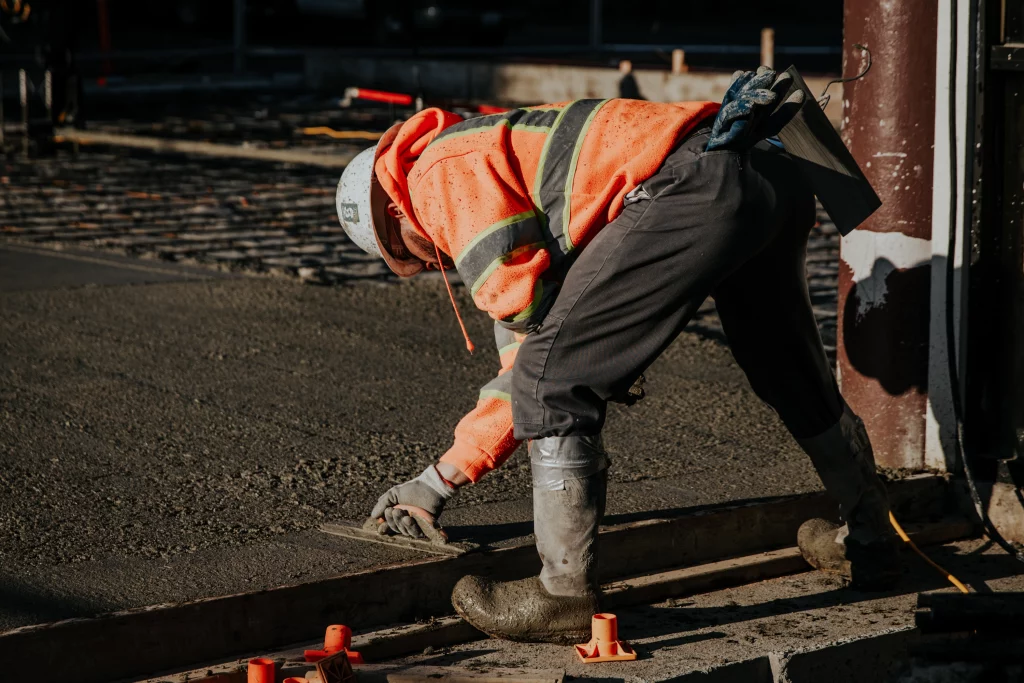Construction utilizes various slabs, including one-way slabs on beams, ribbed slabs, waffle slabs, flat plates, bubble deck slabs, and others. This article looks into each slab type’s exceptional features and advantages, along with their specific applications across diverse building structures. Whether for a comfortable residential dwelling or a towering commercial skyscraper, each slab type offers distinct benefits and practical suitability. In this blog, let’s find out how different types of slabs are used in construction.
Understanding Slabs in Construction
In construction terminology, a “slab” denotes a flat, horizontal, and often reinforced concrete structure utilized for forming floors, ceilings, and roofs. These elements serve as crucial components within building structures, furnishing a sturdy and stable foundation for supporting walls, columns, and beams.
Types of Slabs in Construction
The selection of slab types in construction projects is contingent upon several factors such as the span of the slab, anticipated loads, and the materials and resources at hand. In construction, various types of slabs serve distinct purposes and offer unique advantages. Understanding these differences is crucial for selecting the most suitable slab for a specific project. Below are explanations of different slab types commonly used in construction:
Some common types of slabs include:
One-Way Flat Slab
Among the most prevalent slab types, the one-way flat slab is designed to support loads predominantly in one direction. Utilizing 4 to 6 inches of concrete, it provides cost-effective solutions for both commercial and residential projects. However, its span capabilities may limit its suitability for certain applications such as bridges or ceilings.
Two-Way Flat Slab
Employing support beams at all four corners, the two-way flat slab evenly distributes weight across its entirety. This type is commonly favoured for multi-storeyed buildings where floors must bear the weight of additional levels. The choice between one-way and two-way slabs depends on the project’s dimensions and requirements.
Kitchen Slab
Primarily utilized in residential construction, the kitchen slab serves as a platform for kitchen fixtures, particularly stoves. While not intended for structural purposes, it provides a fire-resistant surface for supporting cooking appliances.
Sun Shade Slab
Installed above doors or windows, a sunshade slab offers protection from direct sunlight and rain. It is typically constructed separately from the main structure and serves as a durable alternative to traditional sun shades.
Lintel
Addressing structural vulnerabilities around windows and doors, a lintel redirects loads away from these openings. Options include precast and in situ lintels, each offering distinct advantages in terms of cost and customization.
Sunken Slab
Found in washrooms and similar areas, sunken slabs are positioned below floor grade to accommodate water and sewer lines. These slabs typically feature a sloped design to facilitate drainage.
Cable Suspension Slab
Commonly employed in bridge construction, cable suspension slabs enable long spans without compromising structural integrity. They can also be utilized for raised walkways or floating foundations in commercial settings.
Pre-Tension Slab
Utilizing tightened steel cables within the concrete framework, pre-tension slabs enhance strength and prevent compression. They offer a thinner profile compared to traditional slabs and require fewer joints, reducing maintenance needs.
Waffle Slab
Known for its distinctive appearance resembling a waffle, this slab type is popular in commercial settings for its aesthetic appeal and versatility in accommodating lighting and acoustic features.
Pitched Roof Slab
Mimicking the appearance of traditional pitched roofs, this slab type utilizes lightweight tiles supported by steel or timber framing. It offers reduced maintenance requirements and can enhance the aesthetic appeal of a building.
Post-Tension Slab
Similar to pre-tension slabs, post-tension slabs utilize tensioned cables to reinforce concrete and prevent cracking. Careful installation is crucial to avoid air pockets and ensure structural integrity.
Hollow Core Slab
Prefabricated and delivered to the site, hollow core slabs offer efficient installation and excellent span distances. They feature pre-installed voids for wiring and plumbing, further streamlining construction processes.
Hardy Slab
Constructed using stacked concrete blocks and reinforced with formwork, hardy slabs offer cost-effective solutions with enhanced heat and sound insulation. They are particularly suitable for hot climates.
Dome Slab
Utilized in iconic architectural structures such as mosques and temples, dome slabs employ a steel support structure to achieve distinctive semi-circular shapes.
Projected Slab
Projected slabs extend from buildings to provide sheltered areas such as covered entrances. These slabs utilize a cantilever design to support their weight from a single end.
Room Chajja
Room chakras serve as built-in shelves within interiors, offering additional storage space without compromising structural integrity.
Understanding the characteristics and applications of these various slab types is essential for efficient and effective construction projects.
Functions of Slabs in Construction
Slabs play pivotal roles in the construction of buildings, fulfilling diverse functions such as:
Supporting Other Building Elements: Serving as a stable foundation, slabs provide a robust base for supporting walls, columns, and beams, ensuring structural integrity.
Even Weight Distribution: Slabs distribute the weight of the building and its contents uniformly across the foundation, preventing uneven settlement and ensuring stability.
Level Surface Formation: By creating level surfaces for floors, ceilings, and roofs, slabs facilitate the installation of finishes and fixtures, enhancing aesthetics and functionality.
Stable Base for Finishes: Slabs offer a stable base for floor and wall finishes, ensuring the durability and longevity of surface materials while providing a smooth and even appearance.
Understanding these functions underscores the critical importance of slabs in the construction process, contributing to the overall safety, stability, and usability of buildings.
Understanding the functions of slabs, including their role in supporting building elements, distributing weight evenly, forming level surfaces, and providing a stable base for finishes, highlights their indispensable nature in the construction process. Whether in residential dwellings, towering skyscrapers, or iconic architectural structures, slabs play a pivotal role in ensuring safety, stability, and aesthetic appeal.
When it comes to choosing materials for slabs, the quality and reliability of cement cannot be compromised. SRMPR Cements stands out as a trusted choice for slabs, offering superior strength, durability, and performance. With a commitment to excellence and innovation, SRMPR Cements provides the ideal foundation for constructing robust and long-lasting slabs, making them the preferred option for discerning builders and contractors.
In conclusion, the diverse array of slab types, coupled with the indispensable functions they fulfill, underscores their vital role in the construction industry. With SRMPRi Cements as the preferred choice for slab construction, builders can rest assured knowing they have a reliable partner in achieving excellence and longevity in their projects.



